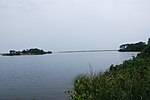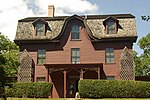North Cape oil spill

The North Cape oil spill took place on January 19, 1996, when the tank barge North Cape and the tug Scandia grounded on Moonstone Beach in South Kingstown, Rhode Island, after the tug caught fire in its engine room during a winter storm. An estimated 828,000 US gallons (3,130 m3) of home heating oil was spilled. Oil spread throughout a large area of Block Island Sound, including Trustom Pond National Wildlife Refuge, resulting in the closure of a 250-square-mile (650 km2) area of the sound for fishing. Hundreds of oiled birds and large numbers of dead lobsters, surf clams, and starfish were recovered in the weeks following the spill. US federal and Rhode Island state governments undertook considerable work to clean up the spill and restore lost fishery stocks and coastal marine habitat. The North Cape oil spill is considered a significant legal precedent in that it was the first major oil spill in the continental U.S. after the passage of the Oil Pollution Act of 1990, resulting from the Exxon Valdez oil spill in Alaska on March 24, 1989.
Excerpt from the Wikipedia article North Cape oil spill (License: CC BY-SA 3.0, Authors, Images).North Cape oil spill
Geographical coordinates (GPS) Address Nearby Places Show on map
Geographical coordinates (GPS)
| Latitude | Longitude |
|---|---|
| N 41.368611111111 ° | E -71.576944444444 ° |
Address
Rhode Island, United States
Open on Google Maps








